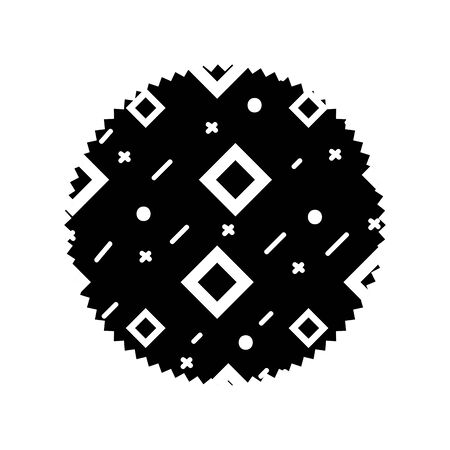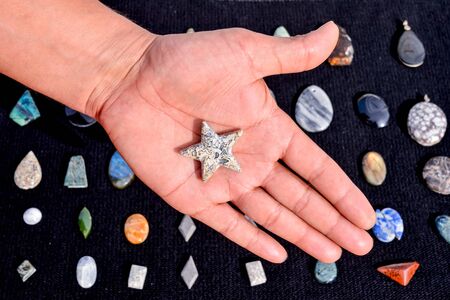1. Introduction to Crystal Divination
Crystal divination, often known as “crystal gazing” or “scrying,” is a spiritual practice where individuals use crystals—most famously crystal balls—to gain insight, guidance, or answers to questions. This practice has deep roots in Western culture and has long been associated with mystics, fortune tellers, and spiritual seekers. At its core, crystal divination involves focusing on the clarity and reflective surfaces of crystals to enter a meditative state, allowing visions or impressions to arise.
What is Crystal Divination?
Crystal divination refers to using crystals as tools for seeing beyond ordinary perception. Practitioners believe that crystals act as conduits for spiritual energy, helping them tune into hidden knowledge or future possibilities. While it’s most commonly linked with clear quartz spheres, many types of crystals and stones are used in various methods, from palm-sized gems to elaborate crystal grids.
Significance in Western Spiritual Practices
Within Western spiritual traditions, crystal divination has served multiple purposes—from entertainment at fairs to serious spiritual inquiry by those seeking wisdom. Its popularity grew during the Middle Ages and Victorian era but traces back even further, being influenced by earlier Greco-Roman and Celtic beliefs. Today, it remains a popular part of modern metaphysical practices, often integrated with tarot reading, astrology, and meditation.
Common Uses of Crystal Divination
| Purpose | Description |
|---|---|
| Insight into Life Questions | Many seek answers about love, career, or personal growth through crystal readings. |
| Spiritual Guidance | Practitioners use crystals to connect with higher wisdom or spirit guides. |
| Meditation Enhancement | Crystals help deepen meditation by focusing the mind and calming thoughts. |
| Personal Empowerment | Some people use crystals for self-discovery and building intuition. |
Why Crystals?
The unique structure and energy of crystals are believed to amplify intuition and psychic abilities. Their beauty and tactile qualities also make them appealing tools for spiritual exploration. For many Americans today, crystal divination represents both a link to ancient tradition and a modern path for personal insight.
2. Ancient Beginnings and Early Beliefs
The fascination with crystals and their mystical powers stretches back thousands of years in Western history. In ancient times, people believed that crystals could reveal hidden truths, predict the future, and connect them to spiritual realms. This belief was especially strong in Greco-Roman and Celtic cultures, where crystal divination played a unique role in daily life and religious practices.
Greco-Roman Traditions
In the world of ancient Greece and Rome, crystals were more than just beautiful stones—they were thought to hold special energies. Greeks often used rock crystal (a clear form of quartz) for scrying, which means gazing into a reflective surface to receive visions or messages. The famous philosopher Pliny the Elder wrote about the magical properties of crystals, describing how they were used for both healing and divination. Romans also believed certain gemstones could protect against evil or bring good luck, making them popular among soldiers and travelers.
Popular Crystals in Greco-Roman Times
| Crystal | Believed Power | Common Use |
|---|---|---|
| Rock Crystal (Quartz) | Clarity, foresight | Scrying, amulets |
| Amethyst | Protection from drunkenness | Cups, jewelry |
| Emerald | Truth-telling, love | Talisman, rings |
Celtic Crystal Lore
The ancient Celts—peoples living in what is now Ireland, Scotland, and parts of mainland Europe—had their own traditions around crystals. They believed that stones like quartz and agate held the power of the earth spirits. Druids, who were spiritual leaders in Celtic societies, often carried crystals as part of their rituals. They used them for healing, protection, and even to help guide important decisions. For the Celts, crystals symbolized a direct link to nature’s wisdom.
Celtic Uses for Crystals
- Healing: Placing stones on the body to cure ailments.
- Divination: Using crystals as tools to foresee future events.
- Rituals: Incorporating crystals into ceremonies for blessings and protection.
The Lasting Influence of Early Crystal Beliefs
The traditions started by Greco-Roman and Celtic societies formed the roots of crystal divination in Western culture. Their practices laid the groundwork for how people in later centuries would use crystals for both spiritual guidance and everyday magic.

3. The Middle Ages and Mysticism
The history of crystal divination took a fascinating turn during the Medieval period in Europe. This era, often called the Middle Ages, stretched from around the 5th to the late 15th century. During this time, people’s curiosity about the unknown grew stronger, leading to an increased interest in mysticism, alchemy, and occult practices. Crystals began to play a more important role not just as beautiful stones, but as tools for spiritual exploration and magical rituals.
The Rise of Mysticism
Mysticism flourished in Medieval Europe as people searched for deeper spiritual meaning. Monks, scholars, and even royalty explored ways to connect with the divine and understand hidden truths. Crystal balls became popular among mystics who believed that gazing into these clear spheres could reveal visions of the past, present, or future. This practice was known as “scrying.” While some thought these visions came from angels or higher powers, others believed that crystals held their own secret energies.
Alchemy and Occult Practices
Alchemy was another major trend during this time. Alchemists were early scientists who mixed chemistry with spirituality in hopes of transforming base metals into gold or discovering the elixir of life. Many alchemists used crystals in their experiments, believing that certain stones had unique properties to enhance magical spells or protect against evil forces. Alongside alchemy, occult practices—rituals meant to uncover hidden knowledge—often involved crystals as key instruments for divination and protection.
Common Uses of Crystals in Medieval Europe
| Use | Description |
|---|---|
| Scrying | Gazing into crystal balls or polished stones to see visions or gain insights |
| Protection | Wearing or carrying crystals as amulets to ward off evil spirits or illness |
| Magical Rituals | Placing crystals on altars or using them in spells for healing or fortune-telling |
| Alchemy Experiments | Incorporating crystals in attempts to transform substances or achieve enlightenment |
Crystal Divination’s Influence on Society
During the Middle Ages, crystal divination was both admired and feared. While many people sought out fortune tellers and mystics for guidance using crystals, church authorities often viewed these practices with suspicion. Sometimes practitioners faced accusations of witchcraft or heresy. Despite this tension, crystal divination continued to shape European culture by influencing art, literature, and even medical practices.
4. Renaissance and Enlightenment Influences
The Renaissance and Enlightenment periods marked a turning point in the history of crystal divination in Western culture. These eras, spanning from the 14th to the 18th century, were all about rediscovering ancient wisdom, embracing new ideas, and challenging established beliefs. During this time, crystal divination experienced both a revival and a transformation.
The Revival of Crystal Divination
Interest in mystical practices like crystal gazing reemerged during the Renaissance. This was partly due to scholars revisiting classical texts from Greece, Rome, and Egypt that discussed magical arts. People became curious about how crystals could connect them to hidden knowledge or spiritual guidance.
Influence of Notable Western Thinkers
Many influential figures explored or commented on crystal divination during these periods. Here’s a quick look at some key thinkers and their perspectives:
| Name | Role | Perspective on Crystal Divination |
|---|---|---|
| John Dee | English mathematician & astrologer (16th century) | Used a crystal ball called a “shew-stone” for communicating with angels; believed it could reveal divine secrets. |
| Nostradamus | French seer (16th century) | Reportedly used water-filled bowls and crystals for scrying his famous prophecies. |
| Athanasius Kircher | German Jesuit scholar (17th century) | Skeptical; studied reports of crystal gazing as part of his interest in natural magic but emphasized scientific explanations. |
| Isaac Newton | English scientist (17th-18th century) | Studied crystals for their optical properties; his work on light inspired new ways of thinking about the mysteries of nature, though he did not personally practice divination. |
Changing Attitudes Toward Crystal Divination
While some embraced crystal divination for spiritual insight, others began to question its validity as science gained popularity. The Enlightenment’s focus on reason and evidence led many intellectuals to view divination as superstition. However, crystal gazing remained popular among certain groups who valued personal intuition and mystical experience.
Cultural Legacy in America
The ideas and debates from the Renaissance and Enlightenment crossed the Atlantic with early settlers and thinkers. In American culture, this blend of curiosity and skepticism shaped attitudes toward crystal divination—laying the groundwork for its continued fascination today.
5. Modern Revival and Popular Culture
In recent decades, crystal divination has experienced a major revival in the United States. While its roots trace back centuries in Western culture, its modern resurgence is closely tied to New Age movements, pop culture trends, and growing mainstream acceptance.
The New Age Movement and Crystal Divination
The New Age movement, which began gaining traction in the 1970s, played a key role in bringing crystals back into popular consciousness. Followers of this movement believed that crystals could help with healing, personal growth, and spiritual insight. Shops selling crystals, books about their meanings, and workshops on crystal divination became common in American cities.
Crystals in Pop Culture
Crystals soon moved beyond niche circles and entered mainstream pop culture. Celebrities, influencers, and musicians began talking about using crystals for energy or protection. Crystals appeared as props in movies, TV shows, and music videos. This made them even more attractive to younger generations looking for ways to connect with spirituality outside traditional religion.
Examples of Crystals in American Pop Culture
| Pop Culture Reference | Description |
|---|---|
| TikTok & Instagram Trends | Short videos showing how to use crystals for manifestation or stress relief are hugely popular among American teens and young adults. |
| Celebrities (e.g., Adele, Kim Kardashian) | Well-known figures publicly endorse using crystals for well-being or personal rituals. |
| TV Shows & Movies | Shows like “Charmed” or “The OA” feature characters using crystals for magic or divination. |
Mainstream Acceptance in the U.S.
Today, you can find crystal shops not just in big cities but also online and in small towns across America. Crystals are sold at wellness stores, yoga studios, and even some mainstream retail chains. Many Americans now see them as tools for mindfulness, self-care, or simply as decorative items with positive vibes. While not everyone believes in their mystical properties, the use of crystals for divination—whether through meditation, crystal grids, or simple intuition—has become a normalized part of American life.


